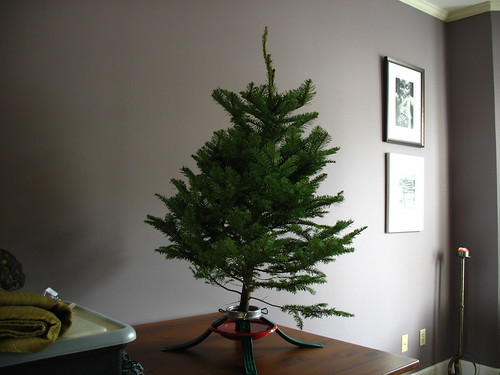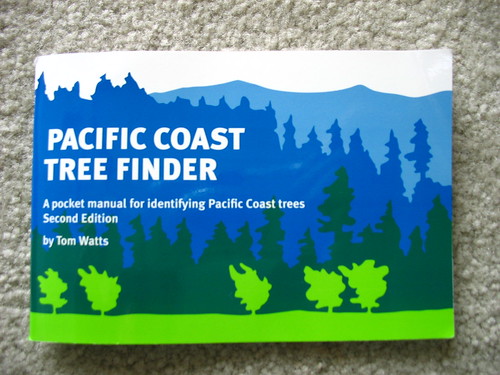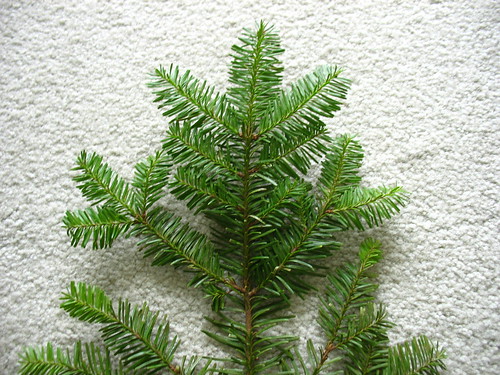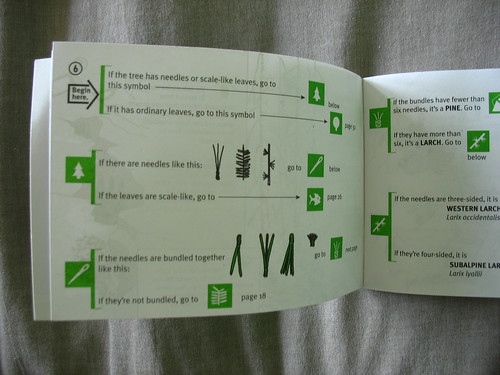
We here at Chez Whoreticulture know that size isn't everything.
Okay, stop laughing. Stop laughing now. Stop it!
We have some serious blogging to do. I want to know what kind of, ahem, "tree" this is.
Do think you know?
Here's a nifty stocking stuffer idea.

These little books come from Nature Study Guild Publishers and cost a mere $3.50. They sell finders suitable for every part of the USA (except probably Hawaii), and they do more than trees. I have the berry finder, fern finder and flower finder, and you can get bird, fish, and animal finders too. My order came in just a few days--so there's still plenty of time left for you to place a Christmas order. (At the link, click Finders under Browse Products.)
Here's our sample.

Shall we begin?

Actually, let me read for you.
"If the tree has needles..." Check!
"If there are needles like these...[shows little picture of pine needles]" Check!
If the needles are bundled together..." No, they're not.
If they're not bundled, go to page 18.
Page 18. Okay, big decision point: "If there are smooth round scars where old needles have fallen off, it's a fir." There are smooth round scars. This tree is a fir, and this business of no smooth round scars is one reason why Douglas Fir is not a true fir (and also the cones). Doug Firs are more like hemlock pines. Other pines without those smooth, round scars: spruce, pinyon, nutmeg, redwood, and yew.
But we have a fir. Okay, moving on.
Do the needles narrow to a stalk where they join the twig, or are the needles wide at the base? This is a slightly difficult decision point. I have to look at a lot of needles to decide.
The needles are wide at the base. Go to page 21.
Are the needles flat and hard to twirl? Definitely hard to twirl. We're almost done.
Is the bark rusty red, or gray?
Definitely gray.
We have Abies lasiocarpa var. lasiocarpa, common name "Subalpine Fir".

4 comments:
It's true -- size doesn't matter. Your Christmas tree is cute. Maybe you can just prop it a little more to the left to compensate for the, ahem, drooping branch.
I am going to have to relearn all my temperate climate trees. I was way off in my guess.
I bet it smells nice even if it does seem to lean to the right just a bit.
My old boyfriend's tree leaned a bit, too! ;)
You guys crack me up!
Yeah, I would not have guessed Abies lasiocarpa v. lasiocarpa. I've never even heard of it. Without the key I would have said Abies grandis, except the needles are too short for that species (so I would have said that's because it's a small plant). In fact, Abies grandis needles narrow to a point where they join the stem, so I would have been wrong on that count.
My teacher taught us this mnemonic: Firs are flat and friendly and get and A for Abies.
(Fir needles tend spread out flat from the stem, and they are pleasant to touch. )
Post a Comment